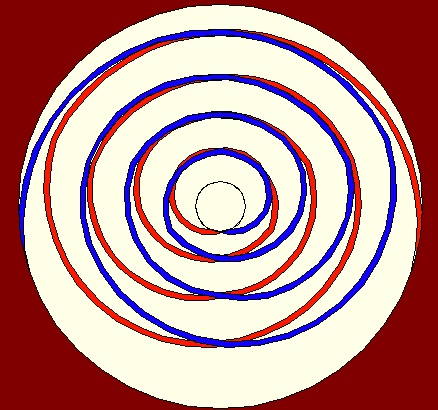DVD
|
|
DVD or digital versatile disc is fastly becoming a popular medium for data, video an audio files. The main reason for this is that DVD can hold as much as 9 Gb of data which is the equivalent of 14 compact discs. In order to use a DVD disc you must first have a DVD drive which enables faster access times.
|
In order to understand DVD I suggest you read and understand how a CD-ROM and CD work.
|
|
DVD disc are made up of four main layers, the first layer is a thick layer of polycarbonate plastic that provides a foundation for the other layers. The next layer is much thinner layer of opaque, reflective material, then a thin layer of transparent film and then finally a layer of clear protective plastic. The same layers are on the opposite side of the disk as well. Thus giving double the storage space.
|
|
|
|
|
|
|
|
|
|
|
|
DVD drive uses the same principle as a CD drive, this is to use lasers to read the lands and pits on the disc surface, the only difference is that a DVD laser has a shorter wavelength, which makes the laser beam narrow enough to accurately read the smaller land and pits on the DVD surface.
|
|
The DVD laser has a magnetic coil surrounding the beam, this coil changes the amount of current flowing, thus the DVD head focuses the beam so that it is concentrated only on the transparent surface.
|
Which then works the same as CDs by reflecting or not reflecting the light beam, thus creating bursts of light that has been reflected which is converted into bursts of electrical energy.
|
|
The transparent layer is only half the story. By adjusting the amount of current in the magnetic coil that surrounds the laser, the read head can change the focal length of the laser so that it passes through the transparent layer and strikes the opaque layer instead, which again is made of lands and pits and the reading process is the same.
|
In order to distinguish between the two read layers, the tracks run in different directions, from the centre of the DVD. (Shown below)
|
|
|
|
|
|
|
|
|
|
|
|
|
|
|
|
|
|
|
The read head follows the blue spiral first until it gets to the centre of the disc, once it gets there with the disc still spinning in the same direction the head then tracks the red spiral, moving out towards the edge o the DVD.
|
I believe that DVD will become more and more popular one of the reasons for this belief is that you can purchase DVD which is double sided (5), the second side contains the same layers as describes above. The only draw back to this is that beacuse DVD drives have only one read head in a fixed position below the DVD you have to flip the DVD over manually in order to access the opposite side.
|












